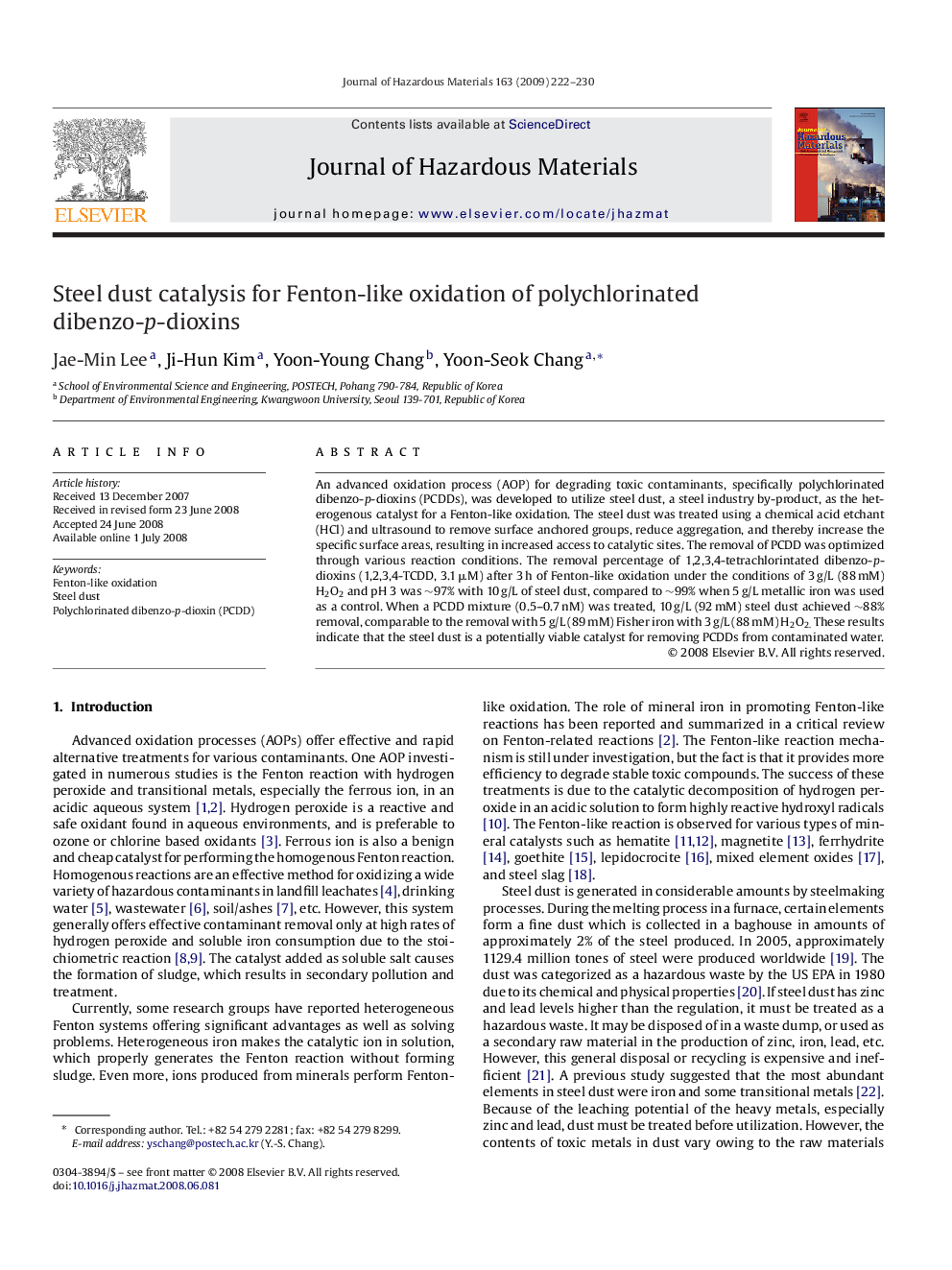| Article ID | Journal | Published Year | Pages | File Type |
|---|---|---|---|---|
| 581947 | Journal of Hazardous Materials | 2009 | 9 Pages |
Abstract
An advanced oxidation process (AOP) for degrading toxic contaminants, specifically polychlorinated dibenzo-p-dioxins (PCDDs), was developed to utilize steel dust, a steel industry by-product, as the heterogenous catalyst for a Fenton-like oxidation. The steel dust was treated using a chemical acid etchant (HCl) and ultrasound to remove surface anchored groups, reduce aggregation, and thereby increase the specific surface areas, resulting in increased access to catalytic sites. The removal of PCDD was optimized through various reaction conditions. The removal percentage of 1,2,3,4-tetrachlorintated dibenzo-p-dioxins (1,2,3,4-TCDD, 3.1 μM) after 3 h of Fenton-like oxidation under the conditions of 3 g/L (88 mM) H2O2 and pH 3 was â¼97% with 10 g/L of steel dust, compared to â¼99% when 5 g/L metallic iron was used as a control. When a PCDD mixture (0.5-0.7 nM) was treated, 10 g/L (92 mM) steel dust achieved â¼88% removal, comparable to the removal with 5 g/L (89 mM) Fisher iron with 3 g/L (88 mM) H2O2. These results indicate that the steel dust is a potentially viable catalyst for removing PCDDs from contaminated water.
Related Topics
Physical Sciences and Engineering
Chemical Engineering
Chemical Health and Safety
Authors
Jae-Min Lee, Ji-Hun Kim, Yoon-Young Chang, Yoon-Seok Chang,
